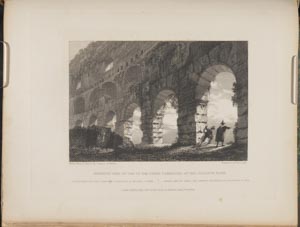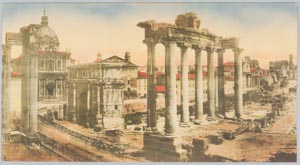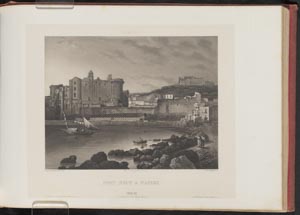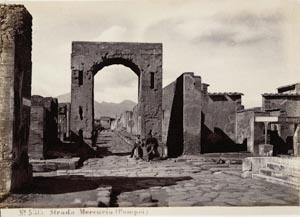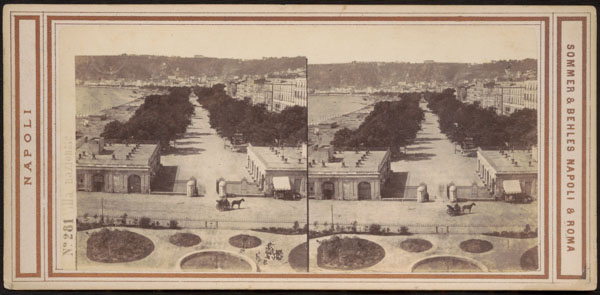Italy
“A man who has not been in Italy is always conscious of an inferiority from his not having seen what it is expected a man should see.” —Samuel Johnson, 1776
In the eighteenth century, Italy was the focus of the “Grand Tour”: a voyage that constituted the capstone of a young European man’s classical education. Along with Paris, the essential places to visit were Venice, Florence, and Rome, whose art and monuments were seen as foundational to all aspects of post-Enlightenment European culture.
Travel literature on Italy was often abundantly and romantically illustrated, but visitors inevitably procured their own views while in the country; the purchase of souvenirs was a key aspect of any Grand Tour. Artists sold views of monuments, or painted their foreign patrons’ portraits alongside props that indicated their wealth and erudition.
Italian views became an important genre of photographic representation almost immediately. This is exemplified in Excursions daguerriennes. Vues et monuments les plus remarquables du globe, whose prints were modelled on daguerreotypes made at sites of interest around the world. It contains more pictures of Italy than of any other country apart from France. Prints throughout the volumes feature compositional flourishes added by the printmakers, in an effort to improve the appeal and clarity of the daguerreotype images.
By the 1860s, numerous photographers had established studios in Italian cities. They catered to a new variety of souvenir-seeking tourists: well-heeled men and women, increasingly from the United States, who followed their mass-market travel guides and crossed vast distances at previously unimaginable speeds by train. They purchased pictures of art works and archaeological sites, Venetian canals and Italian “types,” in formats that evolved and multiplied as the century progressed.
